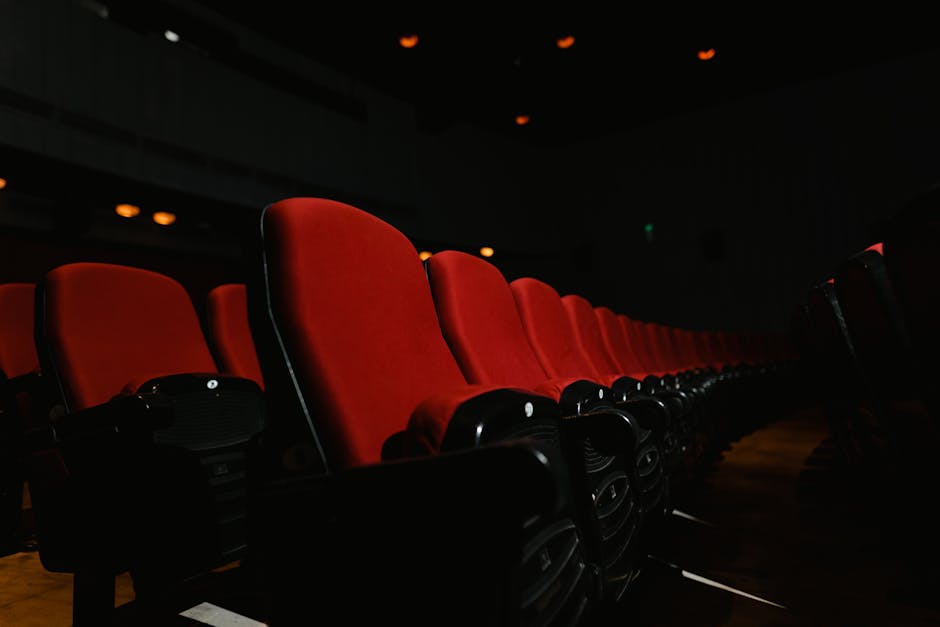Unveiling the Future: Emerging Trends in Theater and Performance Arts
As the world of arts and culture continues to evolve, so too does the landscape of theater and performance arts. From innovative technologies to groundbreaking storytelling techniques, the realm of live entertainment is experiencing a renaissance unlike anything we’ve seen before. In this article, we will delve deep into the emerging trends in theater and performance arts, exploring the cutting-edge developments that are shaping the future of this dynamic industry.
The Rise of Immersive Theater Experiences

One of the most exciting trends in contemporary theater is the rise of immersive experiences. Gone are the days of passive audience members sitting quietly in their seats; today’s theatergoers want to be actively engaged in the performance, blurring the lines between fiction and reality. Immersive theater productions, such as Sleep No More and Then She Fell, place the audience at the center of the action, allowing them to interact with the performers and become part of the story.
These immersive experiences often take place in non-traditional venues, such as abandoned buildings, warehouses, or even outdoor spaces. By breaking away from the confines of a traditional theater setting, these productions create a sense of intimacy and immediacy that is unparalleled. Audiences are no longer mere spectators; they are active participants in the narrative, shaping the outcome of the performance through their choices and actions.
Exploring Diversity and Inclusivity on Stage

Another important trend in theater and performance arts is the push for greater diversity and inclusivity on stage. For too long, the stories told on stage have been dominated by a narrow range of voices, excluding marginalized communities and perpetuating harmful stereotypes. In recent years, however, there has been a concerted effort to amplify diverse voices and showcase a more inclusive range of experiences.
From casting decisions to play selection, theaters are taking steps to ensure that their productions reflect the rich tapestry of human experience. This includes promoting works by playwrights from underrepresented backgrounds, casting actors of color in leading roles, and exploring themes of gender identity and sexual orientation on stage. By embracing diversity and inclusivity, theaters are not only creating more authentic and resonant art but also expanding their audiences and fostering a deeper connection with the community.
Harnessing the Power of Technology in Performance

Technology has always played a crucial role in the world of theater, from lighting and sound design to elaborate set constructions. However, in recent years, advances in technology have opened up new possibilities for creative expression and storytelling. From projection mapping to virtual reality, artists are harnessing the power of technology to create immersive and visually stunning performances that push the boundaries of traditional theater.
One of the most exciting developments in this space is the use of augmented reality (AR) and virtual reality (VR) in live performances. By incorporating these technologies into their productions, theaters can transport audiences to new worlds, blurring the lines between the physical and digital realms. This not only enhances the audience’s experience but also allows artists to experiment with new forms of storytelling and audience engagement.
Adapting to the Digital Age: Livestreaming and Online Performances

The COVID-19 pandemic forced theaters around the world to close their doors, leading to a surge in online performances and livestreamed events. While initially born out of necessity, these digital offerings have opened up new opportunities for theaters to reach audiences beyond their physical locations. Livestreaming performances allow theaters to connect with viewers around the globe, expanding their reach and generating new revenue streams.
Even as theaters begin to reopen, the trend of livestreaming and online performances shows no signs of slowing down. Audiences have grown accustomed to the convenience and accessibility of digital platforms, and theaters are embracing these new technologies as a way to engage with a broader audience. Whether it’s a live broadcast of a stage play or an interactive virtual performance, theaters are finding innovative ways to adapt to the digital age and ensure their work remains relevant and accessible.
Environmental Sustainability in Theater Production
With increasing awareness of climate change and environmental issues, theaters are taking steps to reduce their carbon footprint and embrace sustainable practices. The production of a theater performance can be resource-intensive, from energy consumption to set construction materials to transportation logistics. In response, many theaters are implementing eco-friendly initiatives to minimize their impact on the environment.
From using recycled materials in set design to reducing energy consumption through LED lighting and solar power, theaters are finding creative ways to become more sustainable. Some theaters have even gone as far as implementing zero-waste policies, composting organic waste, and recycling materials to minimize their environmental impact. By embracing sustainability in their operations, theaters are not only reducing their carbon footprint but also setting an example for other industries to follow.
Reshaping the Traditional Audience-Performer Relationship
Traditionally, the relationship between audience and performer has been one of passive observation, with the audience serving as mere spectators to the action on stage. However, emerging trends in theater are challenging this paradigm, reimagining the audience-performer dynamic in innovative and exciting ways. Interactive performances, participatory theater, and site-specific productions are just a few examples of how theaters are reshaping this relationship.
Interactive performances invite audiences to engage directly with the performers, breaking down the fourth wall and inviting them to become active participants in the narrative. Participatory theater goes a step further, blurring the lines between audience and performer and creating a truly collaborative experience. Site-specific productions take this concept even further by staging performances in unconventional locations, allowing audiences to explore the space and interact with the performers in new and unexpected ways.
Embracing Multidisciplinary Collaborations
Collaboration has always been at the heart of theater, with artists from different disciplines coming together to create something greater than the sum of its parts. In recent years, theaters have been increasingly embracing multidisciplinary collaborations, bringing together artists from diverse backgrounds to create innovative and boundary-pushing work. From dance and music to visual arts and technology, these collaborations are redefining what theater can be.
One of the most exciting examples of this trend is the fusion of theater and technology, with artists incorporating digital elements into their performances to create immersive and interactive experiences. By collaborating with experts in fields such as virtual reality, projection mapping, and motion capture, theaters are pushing the boundaries of traditional storytelling and experimenting with new forms of artistic expression. These multidisciplinary collaborations are not only pushing the art form forward but also fostering a spirit of innovation and experimentation in the theater community.
Conclusion
In conclusion, the world of theater and performance arts is undergoing a period of unprecedented change and innovation. From immersive experiences to diverse storytelling, from technology integration to sustainability initiatives, theaters are embracing new trends and pushing the boundaries of what is possible on stage. By staying at the forefront of these emerging trends, theaters can create more engaging, inclusive, and sustainable performances that resonate with audiences and inspire artists for generations to come.
As we look to the future of theater and performance arts, one thing is clear: the possibilities are limitless. By embracing new technologies, amplifying diverse voices, and fostering collaborative spirit, theaters can continue to evolve and adapt to the ever-changing cultural landscape. The future of theater is bright, and the stage is set for a new era of creativity and innovation.




